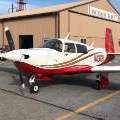Video Mentioning Porsche Mooney
-
Members Online
- ohdub
- Ethan
- 201Mooniac
- portmod7
- KLRDMD
- Flash
- Greg Ellis
- raymondscott0321
- BadMooneyRising
- ta2too
- jjsk784
- hammdo
- Jakes Simmons
- flewmanchu
- 1980Mooney
- wombat
- EricJ
- BlueDun
- Steve Hughes
- DC_Brasil
- markazzarito
- A64Pilot
- Slick Nick
- NickG
- hypertech
- varlajo
- TCC
- anthonydesmet
- dzeleski
- Danb
- Stan
- cferr59
- Jim F
- SLB0118
- Schllc
- MikeOH
- Aaviationist
- PeteMc
- tankles
- eman1200
- M20F
- M20S Driver


Recommended Posts
Join the conversation
You can post now and register later. If you have an account, sign in now to post with your account.